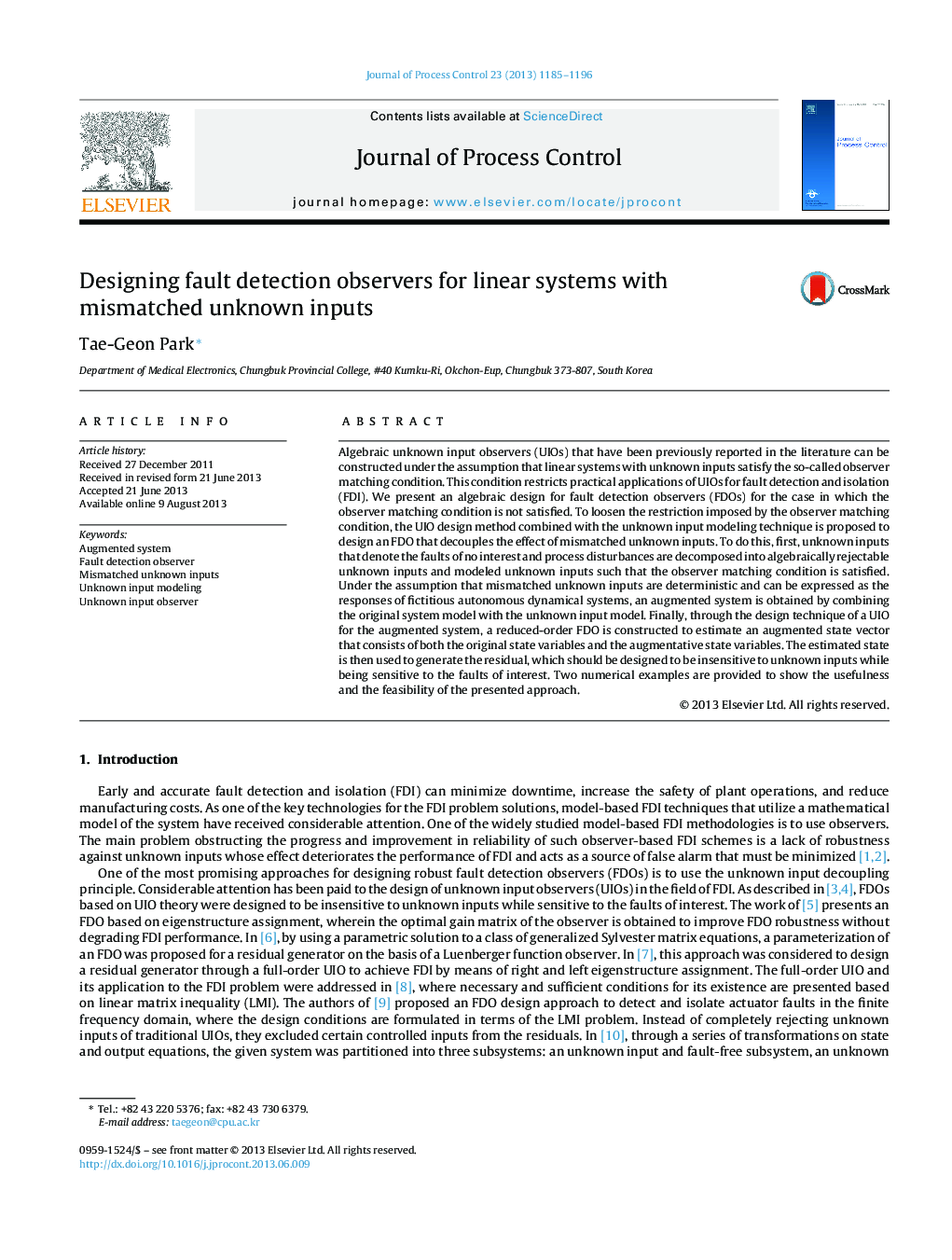| کد مقاله | کد نشریه | سال انتشار | مقاله انگلیسی | نسخه تمام متن |
|---|---|---|---|---|
| 689193 | 889595 | 2013 | 12 صفحه PDF | دانلود رایگان |

• Fault detection observers (FDOs) are designed for linear systems.
• Linear systems with mismatched unknown inputs are considered.
• Unknown input modeling is introduced to decouple mismatched unknown inputs.
• The design technique of a UIO for the augmented system provides an FDO.
• Two numerical examples are provided to illustrate the presented approach.
Algebraic unknown input observers (UIOs) that have been previously reported in the literature can be constructed under the assumption that linear systems with unknown inputs satisfy the so-called observer matching condition. This condition restricts practical applications of UIOs for fault detection and isolation (FDI). We present an algebraic design for fault detection observers (FDOs) for the case in which the observer matching condition is not satisfied. To loosen the restriction imposed by the observer matching condition, the UIO design method combined with the unknown input modeling technique is proposed to design an FDO that decouples the effect of mismatched unknown inputs. To do this, first, unknown inputs that denote the faults of no interest and process disturbances are decomposed into algebraically rejectable unknown inputs and modeled unknown inputs such that the observer matching condition is satisfied. Under the assumption that mismatched unknown inputs are deterministic and can be expressed as the responses of fictitious autonomous dynamical systems, an augmented system is obtained by combining the original system model with the unknown input model. Finally, through the design technique of a UIO for the augmented system, a reduced-order FDO is constructed to estimate an augmented state vector that consists of both the original state variables and the augmentative state variables. The estimated state is then used to generate the residual, which should be designed to be insensitive to unknown inputs while being sensitive to the faults of interest. Two numerical examples are provided to show the usefulness and the feasibility of the presented approach.
Journal: Journal of Process Control - Volume 23, Issue 8, September 2013, Pages 1185–1196